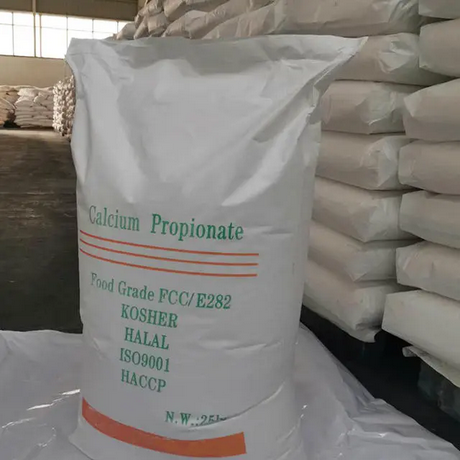close
Choose Your Site
Global
Social Focus
Views: 0 Author: Site Editor Publish Time: 2022-10-31 Origin: Site









Calcium propionate is a safe and reliable mold inhibitor for food and feed approved by the World Health Organization (WHO) and the Food and Agriculture Organization of the United Nations (FAO). White light scaly crystals, or white granules or powder. Slightly peculiar odor, easily deliquescent in the humid air. Monohydrate salt is colorless monoclinic crystals in plate form. Easily soluble in water, and slightly soluble in ethanol. It has a wide range of antibacterial effects on mold, yeast, bacteria, etc. It can be used in bread and pastry to play a preservative role, and the lower the pH value, the higher the preservative effectiveness. So how to use calcium propionate correctly and safely? The following are our specific instructions on calcium propionate.
The following is a list of contents:
·Personal protection of calcium propionate
·Handling of calcium propionate by mistake
·Transportation and storage of calcium propionate
Personal Protection of Calcium propionate
Calcium propionate, like other fats, can be absorbed by humans and animals through metabolism and supply them with essential calcium, an advantage that is incomparable to other antimicrobial agents, and calcium propionate is almost non-toxic to humans. Used in cosmetics as a preservative, the maximum allowable concentration is 2% (in propionic acid). But after all, it is salt, and we should take a series of protective measures when we touch and use it. Wear suitable protective eyewear or chemical safety goggles and appropriate protective gloves to prevent skin contact. Wear appropriate protective clothing to minimize contact with skin. We produce calcium propionate in good packaging with polyethylene bags on the inside and poly-woven bags on the outside, with a net weight of 25 kg per bag.
Handling of accidental ingestion of calcium propionate
If you accidentally ingest calcium propionate, do not induce vomiting. If the victim is awake and alert, give 2-4 cups of milk or water. If you are in an unconscious state, do not give yourself anything to eat and seek immediate medical attention; if you accidentally inhaled it, immediately remove it from the scene to fresh air. If not breathing, give artificial respiration. If breathing is difficult, give an oxygen infusion. If coughing or other symptoms seek medical assistance; if accidentally touched on the skin, rinse skin with plenty of soap and water remove contaminated clothing and shoes for at least 15 minutes, if irritation increases or persists, seek medical assistance. Wash clothing before reuse; if in eyes, flush eyes immediately with plenty of water for at least 15 minutes and lift upper and lower eyelids from time to time, and obtain immediate medical assistance.
Transportation and Storage of Calcium propionate
Calcium propionate should be transported under cover, protected from sun and rain, in a clean condition. Operators use personal protective equipment to avoid dust generation, avoid inhalation of vapors, aerosols, or gases, avoid inhalation of dust; do not generate dust when collecting and disposing of, sweep off and shovel into suitable closed containers to be disposed of, do not allow the product to enter the sewer. The calcium propionate we produce is stored in a ventilated place, safe from rain, humidity, and sunlight.
Calcium propionate is a new feed additive, mainly used as an antifungal agent to extend the shelf life of feed. If combined with other inorganic salts, it can also increase the appetite of livestock and milk production of cows. Calcium propionate has the advantages of low volatility, high-temperature resistance, and good adaptability to animals, and it is suitable for a variety of feeds. While using it rationally, it is also important to pay attention to safety issues. These are the instructions on the safe use of calcium propionate, if you want to know more about calcium propionate, welcome to visit our company's official website www.jysunway.com, we look forward to your visit.